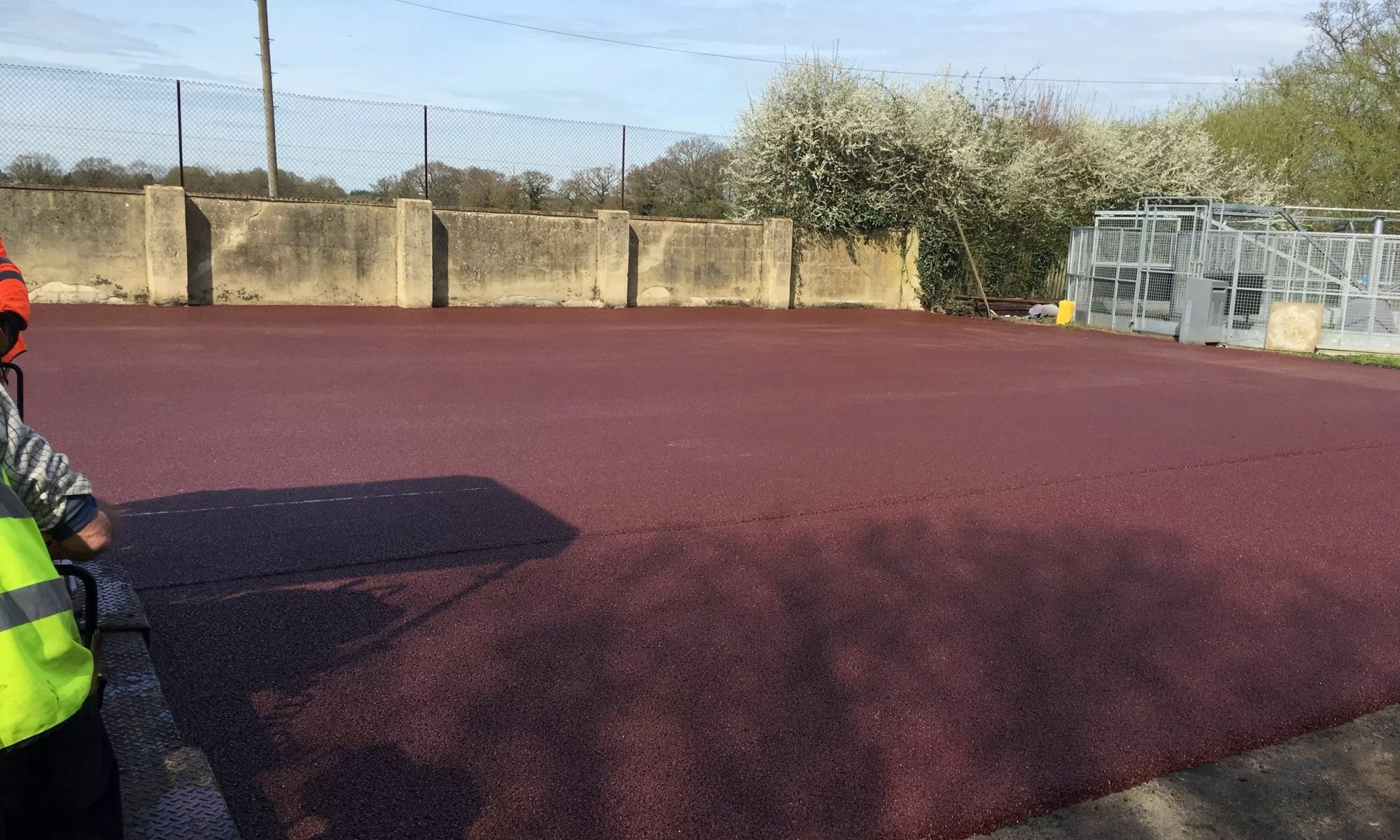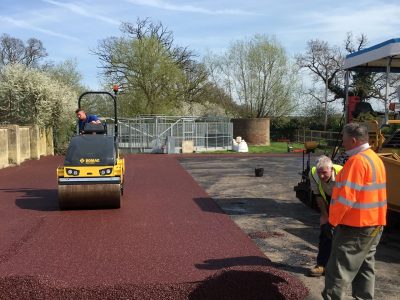
Posted on: January 12, 2018
What is the Difference Between Resin Bound & Bonded Surfacing?
How do you make a surface attractive yet slip-resistant?
It is possible to have both for a surface that is both decorative and meets the necessary safety standards.
In doing this, two methods are generally used; resin bonded surfacing and resin bound surfacing. For someone new to civil engineering terminology, these two terms may sound the same, but they are far from similar. The techniques used in the two methods are different and the applications are different.
Precision Civils does both resin bound and resin bonded surfacing in Oxford, Reading and the wider South of England. We have highly professional and experienced teams that have over 20 years’ experience in doing these types of projects.
If you need attractive looking driveways, car parks, outdoor plazas and even sports fields, you will find a reliable partner in us. We take on both industrial/commercial and residential civil engineering projects of all sizes. If you need to do resin bound surfacing, get in touch with our able team for prompt services.
Resin surfacing
It is best to first understand what resin surfacing entails. This is where aggregates are ‘glued’ to a base layer, achieving a firm and slip-resistant surface. The two methods do this differently in method, finish and basic properties.
What is resin bound surfacing
In this type of surfacing, the aggregates are mixed together with the resin. The mixture is poured on the base surface spread and worked on with trowels. This gives a flat, smooth and consistent surface which is slip resistant and water-permeable.
What is resin bonded surfacing?
This is also known as the scatter method. The resin mix is first applied and spread on the base layer, and then the aggregates are applied on top of the resin. The aggregates are left to bond with the base surface. The final result is a rough textured surface. Resin bonded surfacing is water-impermeable. The surface is left to cure after which the loose aggregates are swept away.
What are the main differences?
• Technique in laying the aggregate
• The final surface texture – Smooth and rough
• Water permeability – This difference makes the different surfacing methods suitable for different uses.
• Stability – Mixing the aggregate with the resin makes resin bound surfaces more stable
• Environmental friendliness – Resin bound surfacing uses less aggregate requiring less stone excavation
• UV stability – Resin bound surfaces withstand the sun and harsh elements better than resin bonded surfaces.
Different Uses
Resin bound applications
Walk ways and paths – The smooth surface achieved with this technique makes it ideal for walking paths and outdoor floors. The permeable nature of the surface also makes drainage easier without having to put up extra expensive drainage solutions.
Resin bound surfaces are also used in decorative gardens for use around tree pits. This ensures water reaches the roots of the plants. Larger size aggregates are used for better permeability.
Outdoor sports surfaces – Tennis courts and cycling paths are done using this technique to drain away the water easily. A basketball pitch, for example, can hold a huge volume of water but it is not feasible to cut drainage ditches on it, making resin bound surfacing a viable alternative.
Decorative surfacing – Outdoor showrooms and plazas are some good examples where decorative surfacing works very well. Resin bound surfacing can be used to create a variety of colored finishes to fit different tastes and themes. Crushed glass is also used together with aggregate for more attractive finishing.
Resin bonded surfaces applications
Driveways and car parks- The rough texture of resin bonded surfaces is ideal for car parks and driveways for better grip especially when wet. The impermeability of the surface means that any space with this type of surfacing must have adequate runoff and drainage to prevent standing water.
Classical decoration- Graveled driveways and patios look classic, especially for single-family homes. Using resin bonded surfacing gives this look without too much work and costs. Unlike gravel, you do not have to worry about maintaining the loose aggregate as it is stuck.
Highways – High traffic highways are suited for resin bonded surfacing for the good traction given by the rough texture. Differently sized aggregates can be used in different sections of the highway to signal approaches to junctions and other special areas where the feel of the road alerts the drivers.
Resin bonded surfaces are quick to install. The only disadvantage is that the aggregates tend to come off with time, as they are bonded only on one side. They become loose and wear out, making this type of surface less durable than resin bound surfacing. However, resin bonded surfacing will still give good service when laid properly.
Both types of resin finishes are easy to clean and are low maintenance. You can wash off the surface using a gentle power wash. An occasional sweep will also keep the surface attractive.



